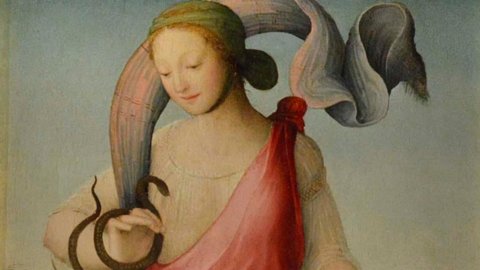The great exhibition is curated by a large team of experts chaired by Antonio Paolucci and promoted by the Municipalities of Montepulciano, Pienza and San Quirico d'Orcia, the Fondazione Musei Senesi, the Polo Museale della Toscana - Superintendency of Fine Arts and Landscape of Siena, Grosseto and Arezzo, by the Diocese of Siena, Colle di Val d'Elsa, Montalcino, the Diocese of Montepulciano, Chiusi, Pienza, the University of Siena - Department of Historical Sciences and Cultural Heritage, the Province of Siena and the Tuscany region.
A project born from the will of all the territorial institutions, therefore, with the aim of finally highlighting the interpreters of Sienna painting between the early 500s and the second half of the 1600s. Artists of excellent and often very remarkable level , still not all fully studied and known.
The exhibition is scheduled in three different sections divided chronologically in relation to the presence of works of art already present on site.
Domenico Beccafumi, the artist as a young man
MONTEPULCIANO, Crociani Civic Museum and Pinacoteca.
Starting from the happy discovery of a documented work of Domenico Beccafumi's youthful activity, the S. Agnese Segni of the Civic Museum, the section first deals with illustrating the documents and testimonies that made the new attribution possible and, subsequently , to analyze the considerable problems inherent in the artistic personality of the young Beccafumi, hosting a large number of his works together with masterpieces by Sodoma, Girolamo Genga, Fra' Bartolomeo, Andrea del Brescianino, Girolamo di Giovanni del Pacchia and Lorenzo di Mariano known as the Marrina, protagonists of the Sienese artistic environment in the first decade of the 500th century.
From Sodom to Riccio: Sienese painting in the last decades of the Republic
SAN QUIRICO D'ORCIA, Palazzo Chigi Zondadari
The painting around which the itinerary unfolds is the Madonna and Child with Saints Leonardo and Sebastiano by Bartolomeo Neroni known as il Riccio, belonging to the Compagnia del Santissimo Sacramento of San Quirico d'Orcia. The section therefore examines the artistic period that goes from the late activity of Sodoma, of which there are several important works, also including paintings executed by significant personalities such as Giorgio di Giovanni, Marco Pino and Giomo del Sodoma, to conclude with a extensive review dedicated to the remarkable production of Bartolomeo Neroni called il Riccio.
Francesco Rustici known as il Rustichino, gentle Caravaggesque and naturalism in Siena
PIENZA, S. Carlo Borromeo Conservatory
The presence, in the church of S. Carlo Borromeo in Pienza, of a splendid altarpiece by Francesco Rustici depicting the Madonna and Child with Saints Carlo Borromeo, Francesco, Chiara, Caterina and Giovanni Battista, makes it possible to build an interesting exhibition around this work concerning mainly the activity of Rustichino, of which several masterpieces are present, gathered together for the first time.
The section also aims to illustrate the family environment in which the painter's first training took place, with paintings by Alessandro Casolani and Vincenzo Rustici, also proposing works by those artistic personalities who had so much importance in his stylistic evolution, such as, for example, Orazio Gentileschi and Antiveduto Gramatica and closes with a review of paintings by Sienese painters of his contemporaries such as Rutilio and Domenico Manetti, Bernardino Mei, Astolfo Petrazzi and Niccolò Tornioli who, to varying degrees, were influenced by naturalistic painting





